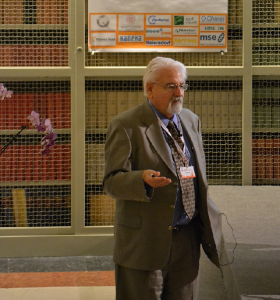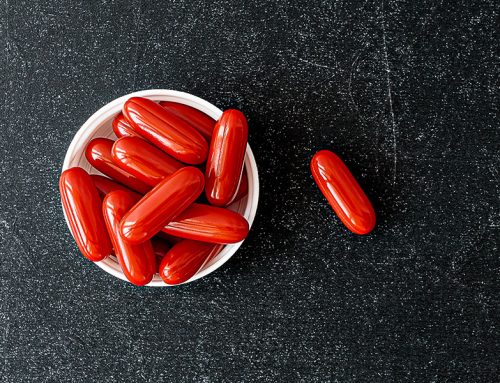
The number of bean-shaped mitochondria in our cells varies according to the energy needs of the various organs. The cells in organs with high energy needs, e.g. the heart, the liver, the skeletal muscle, will have greater numbers of mitochondria than will the cells of less active organs, e.g. the skin. Adequate supply of Coenzyme Q10 is necessary to keep the mitochondria actively producing ATP molecules.
Cellular respiration is the name for the process by which the ATP molecules are produced inside the mitochondria in our cells. Coenzyme Q10 in its oxidized form is an essential component in this process of energy production.
Fewer Coenzyme Q10 molecules in the mitochondria inevitably mean less ATP energy production. Fewer ATP molecules mean less energy for our cells.
Heart muscle cells with low Coenzyme Q10 concentrations and with fewer ATP molecules produced make for an energy starved heart.
What are these mitochondria, and what do they do?
You cannot read much about the importance of Coenzyme Q10 supplements without coming across the term “mitochondria” (singular form = mitochondrion). The mitochondria inside our cells are microscopic organelles that have an inner and outer membrane and their own DNA, which suggests that the mitochondria derive originally from bacteria that got inside animal cells quite early in the evolution of eukaryotic cells.
Our cells and the mitochondria inside them co-exist in a symbiotic relationship. Our cells provide a secure home for the mitochondria, and the mitochondria serve as the energy factories for our cells.
The mitochondria convert the energy that is in carbohydrates and fatty acids to energy in the form of ATP (adenosine triphosphate).
Coenzyme Q10 and antioxidant protection of the cells
There are perhaps as many as 40 different genetic disorders that affect the role of the mitochondria in cellular respiration. One consequence of these genetic disorders is that the mitochondria are not able to metabolize completely the carbohydrates and fatty acids into ATP molecules.
As a result of this incomplete metabolism, harmful compounds known as free radicals are produced as a by-product. These harmful free radicals cause damage to the DNA, lipids, and proteins in our cells. Oxidative stress and oxidative damage are the names we give to the harmful effects of free radicals.
Coenzyme Q10 molecules in their reduced form provide antioxidant defense against oxidative damage in the cells. They neutralize many of the harmful free radicals.
Dual purpose of Coenzyme Q10
We need adequate quantities of Coenzyme Q10 molecules in our cells and in the mitochondria to carry out both biological functions:
- cellular energy production
- antioxidant protection of the cells
Coenzyme Q10 and ageing and heart disease and low energy disorders
It is entirely likely that mitochondrial malfunction is also the cause of many diseases beyond the identifiable genetic diseases:
- diseases associated with ageing
- heart disease
- low energy disorders such as chronic fatigue syndrome
Coenzyme Q10 and the energy starved heart
Dr. William Judy, SIBR Research Institute, credits Dr. Svend Aage Mortensen, the lead researcher on the Q-Symbio study, with developing the idea that energy starvation of the heart muscle cells could be the primary cause of chronic heart failure. Dr. Mortensen first presented the documentation for the concept of cellular energy starvation, caused by an inadequate availability of Coenzyme Q10, in his doctoral dissertation submitted to the University of Copenhagen.
Lack of Coenzyme Q10 and the atrophy of the mitochondria
At its most basic, the theory proposed by Dr. Mortensen explains that, without an adequate supply of Coenzyme Q10, numerous mitochondria in the heart muscle cells will atrophy and will colonize adjacent to the cell membrane. There, these mitochondria will lie inactive and dormant, producing no energy.
However, it seems that some, perhaps many, of these atrophied mitochondria can be revived with time and Coenzyme Q10 supplementation.
The use of Coenzyme Q10 supplements as an adjunctive therapy – in conjunction with conventional medical therapy – can improve the symptoms and survival of chronic heart failure patients. Coenzyme Q10 adjunctive therapy can reduce the extent of hospital stays and can reduce the risk of re-hospitalization [Mortensen 2014].
Cessation of Coenzyme Q10 therapy and the risk of relapse
Both Dr. Mortensen and Dr. Judy have warned that chronic heart failure patients on Coenzyme Q10 adjuvant therapy will suffer a relapse in their energy levels if the Coenzyme Q10 supplementation is stopped.
Moreover, given low cellular Coenzyme Q10 concentrations, the heart muscle cells will not have adequate antioxidant protection.
Coenzyme Q10 and the link to diseases associated with ageing
Just as an inadequate supply of Coenzyme Q10 molecules is implicated in heart disease, so too is the mitochondrial malfunction caused by a lack of Coenzyme Q10 molecules implicated in much physical degeneration associated with ageing and with many low energy syndrome disorders, notably chronic fatigue syndrome.

Dr. Judy remembers seeing electron micrographs of atrophied and colonized mitochondria in skeletal muscle cells before Coenzyme Q10 supplementation and then seeing fewer atrophied mitochondria following a period of Coenzyme Q10 supplementation. It is practically impossible to get all the Coenzyme Q10 we need from our diets as we get older. Supplementation with Coenzyme Q10 is necessary.
Summary of Dr. Judy’s studies of chronic fatigue syndrome
To summarize what we have learned about Coenzyme Q10 and mitochondrial malfunction, I present findings from Dr. Judy’s studies of chronic fatigue syndrome patients:
- Patients with low energy syndrome disorders — characterized by cellular energy starvation — have muscle tissue cells with relatively fewer active mitochondria.
- Many of the once active mitochondria in the energy starved cells seem to have migrated to the cell membranes and lie dormant there on the edge of the cells. These inactive mitochondria are not dead but are in a state of atrophy.
- A first round of therapy with 300 milligrams of Coenzyme Q10 supplements daily for one to two years will feed the energy starved skeletal muscle tissue through the existing mitochondria in the muscle cells.
- The longer -term Coenzyme Q10 supplementation will also regenerate some of the atrophied mitochondria that have colonized adjacent to the cell membranes.
- As the cellular energy starvation situation is corrected and the once dormant mitochondria become active in the cells, the patients’ muscle function will increase [Judy].
- Following the first round of supplementation with Coenzyme Q10, the rejuvenated mitochondria will still be active in the cells but will need to be fed with supplemental Coenzyme Q10 to continue to produce cellular energy.
- Coenzyme Q10 needs to be a life-long supplement in patients with marginal muscle cell kinetics. It is important to maintain optimal levels of cellular Coenzyme Q10 in patients with muscle energy deficiencies:
- chronic fatigue and immune dysfunction syndrome patients
- chronic heart failure patients
- patients taking statin medications
- Prader-Willi syndrome patients
- Parkinson’s disease patients
- Down syndrome patients
- Other patients with other low energy clinical conditions
The same need for Coenzyme Q10 supplements is most likely true of many healthy elderly individuals. Professor Urban Alehagen’s KiSel-10 study has shown that daily supplementation of healthy elderly adults with a combination of Coenzyme Q10 and high-selenium yeast protects heart function and reduces the risk of death from heart disease [Alehagen].
Many patients and many elderly people seem to lose the ability to produce enough Coenzyme Q10 themselves to prevent cellular energy starvation and to prevent the migration of once active mitochondria to the cell membranes where the mitochondria lie dormant.
Daily supplementation with a Coenzyme Q10 supplement with a full range of documentation can make a big difference.
Read our key article about CoQ10 and cardiovascular health in elderly people
Read our key article on CoQ10 as adjuvant therapy for heart failure
Sources
Alehagen, U., Aaseth, J., & Johansson, P. (2015). Reduced Cardiovascular Mortality 10 Years after Supplementation with Selenium and Coenzyme Q10 for Four Years: Follow-Up Results of a Prospective Randomized Double-Blind Placebo-Controlled Trial in Elderly Citizens. Plos One, 10(12), e0141641.
Judy, W. V. & Folkers, K. (1993). Management of chronic fatigue syndrome patients with CoQ10. 8th. Intl. Symp. Biomed. and Clin. Aspects of CoQ, 55.
Mortensen, S. A., Rosenfeldt, F., Kumar, A., Dolliner, P., Filipiak, K. J., Pella, D., & Littarru, G. P. (2014). The effect of coenzyme Q10 on morbidity and mortality in chronic heart failure: results from Q-SYMBIO: a randomized double-blind trial. JACC. Heart Failure, 2(6), 641-649.
Mortensen, S. A. (1989, December) Endomyocardial biopsy. DMB: Danish Medical Bulletin, 36,6, 507-592.
Disclaimer: The information presented in this review is not intended as medical advice and should not be used as such.









Leave A Comment